Preface of the Indonesian translation of Banda. De genocide van Jan Pieterszoon Coen
January 2024, Komunitas Bambu, text: Marjolein van Pagee
In the Netherlands it is now ‘fancy’ to study colonial history. It is no longer controversial to say that colonialism was wrong.
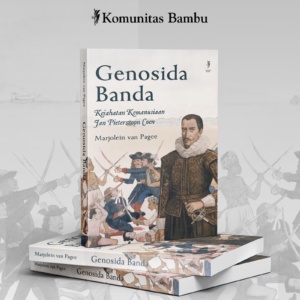 Unfortunately, this does not mean the end of colonial thinking and actions. On the contrary, colonialism has become a business model in the Netherlands. Journalists, historians, curators, artists and filmmakers are launching one project after another to draw attention to Dutch colonialism. This often happens in a self-congratulatory way, with the indirect message: ‘Look how good we Dutch are by looking at the past!’ Many of these makers receive financial support from the Dutch government in the form of subsidies, which already indicates how safe and generally accepted their opinion is. If you play it smart and don’t take a too radical stance, colonialism is a topic that can make your career.
Unfortunately, this does not mean the end of colonial thinking and actions. On the contrary, colonialism has become a business model in the Netherlands. Journalists, historians, curators, artists and filmmakers are launching one project after another to draw attention to Dutch colonialism. This often happens in a self-congratulatory way, with the indirect message: ‘Look how good we Dutch are by looking at the past!’ Many of these makers receive financial support from the Dutch government in the form of subsidies, which already indicates how safe and generally accepted their opinion is. If you play it smart and don’t take a too radical stance, colonialism is a topic that can make your career.
In 2021, when this book was published in the Netherlands, it was exactly 400 years ago that Jan Pieterszoon Coen went to Banda. Various exhibitions, debates and publications commemorated the terrible genocide committed in 1621. The Westfries Museum in Coen’s birthplace Hoorn organized the exhibition ‘Pala – Nutmeg. Tales of Banda’. The Maritime Museum in Amsterdam showed the photo project ‘I love Banda’ by Dutch photographer Isabelle Boon, who portrayed the current inhabitants of the Banda Islands.
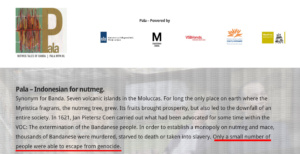
In addition, Dutch academics united under the name ‘Banda Working Group’, in which they collaborated with history experts from Indonesia, including a number from Banda. They held a series of online roundtable discussions via Zoom. The team consisted of: Nancy Jouwe, Wim Manuhutu, Pepijn Brandon, Merve Tosun, Matthias van Rossum, Joëlla van Donkersgoed and Beatrice Glow.
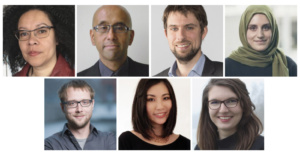
This book also joined in the flow of attention generated by the 400-year commemoration. It was one of the first books published in that year. Still, it has been ignored by many of my fellow historians. Although the book sold relatively well, I never received an invitation from the Banda Working Group to share my insights with them. The Maritime Museum did not want to sell my book in their store. Why?
My book contains an unwelcome message. My conclusion is that for 400 years history has been falsified. And that this falsification of history is still carried out by contemporary historians. For centuries the impression was made that Coen had murdered almost all Bandanese and that only a few managed to escape. Based on this narrative, the genocide was ‘successful’ and there were virtually no Bandanese left. Besides that, the impression is made that Banda was already divided before the arrival of the Dutch, due to traditional differences between the Islamic alliances Uli-lima and Uli-siwa. Bandanese society is said to be egalitarian without any hierarchical structure, which is usually explained as primitive and underdeveloped.
When I started writing this book in 2020, this was also my starting point. Like many historians before me, I thought that roughly 14,000 of the 15,000 Bandanese had been murdered on Coen’s orders in 1621. I also thought that there was an internal struggle being fought between the Uli-lima and Uli-siwa that traditionally divided the islanders and which was the VOC only worsened.
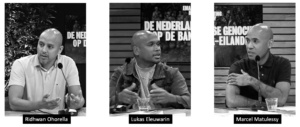
However, a very special meeting, one month before my deadline, turned everything upside down. Three Banda-descendants living in the Netherlands, Marcel Matulessy, Ridhwan Ohorella and Lukas Eleuwarin, contacted me and explained that Dutch historians concealed an important fact. They knew their family tree by heart and told me that their ancestors had migrated to other islands prior to the genocide. They had made the well-considered decision to leave before they would become victims of the Dutch genocidal attempt as well.
I was amazed, so there was something like a Bandanese diaspora! I learned that some of their ancestors had left, under the leadership of a ‘raja’, a king, to ensure the survival of Islam, their family tree and their history. So, they were not running away in a hurry, but they performed the ‘hijrah’, an Islamic term to describe a forced migration. This was evident from the fact that they brough the ‘Buka Tembaga’ (copper books) with them, which not only contain information on 1621, but also the Bandanese history of the centuries before. A history that did not begin in the 17th century but as early as 622. The core of their community is still located on the Kei Islands, an archipelago in eastern Indonesia. Where, in addition to the buku tembaga, the community’s pusaka-pusaka are also kept.
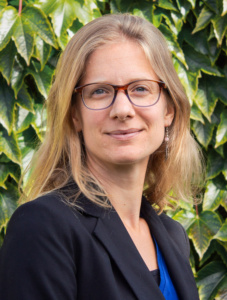
Hearing the stories of Marcel, Ridhwan and Lukas made a great impression on me. Their physical appearance was the proof that the Dutch genocidal attempt, under the leadership of Jan Pieterszoon Coen, had failed. The three were in close contact with the community on Kei and other parts of Maluku. The original inhabitants of the Banda Islands were not completely exterminated, they had survived! They had their own version of history, which in a number of ways differed fundamentally from what the colonial history books told about the genocide.
The erasure of the original Wandan community is the common thread in this book. I want to show that this structural erasure also has an impact on Indonesia. I hope to create awareness that the colonizer, besides brutal violence, also harmed the truth. If Indonesian historians are not critical of Dutch sources, they run the risk of helping to repeat colonial lies.
An example of how Dutch colonial lies also impacted Indonesia is the film Banda The Dark Forgotten Trail (2017) by film director Jay Subyakto. This documentary portrays the history of the islands from pre-colonial times to the present, but without explicitly mentioning the Wandan community. Subyakto was advised by Dutch experts, including the Moluccan-Dutch historian Wim Manuhutu. The latter wrote in 2021 in response to a Facebook post in which I referred to the film:
“It is true that the documentary focuses on Banda itself and that the story of the various Bandanese diaspora […] is missing. The anger in 2017 was based on the impression that the film suggested that there were no more original Bandanese left. And that was not said in the film.”
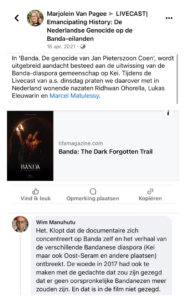 It sounded like nothing was wrong. He basically said that the protestors from the Wandan diaspora who took to the streets in 2017 to prevent the screening of Banda The Dark Forgotten Trail in Ambon, were making a fuss about nothing. In fact, he also said that what I was addressing in my book was not important. Apparently, according to him, the erasure and falsification of history was not too bad.
It sounded like nothing was wrong. He basically said that the protestors from the Wandan diaspora who took to the streets in 2017 to prevent the screening of Banda The Dark Forgotten Trail in Ambon, were making a fuss about nothing. In fact, he also said that what I was addressing in my book was not important. Apparently, according to him, the erasure and falsification of history was not too bad.
However, I believe that not explicitly naming the diaspora community is not a minor detail. Not explicitly naming them, corresponds with Dutch historiography in which the impression is given that almost none of the original inhabitants survived. As a result, no one takes Wandan into account as a community, as if their version of history does not matter. Dutch sources also suggest that the original Bandanese were already at war with each other, due to disagreements between Uli-lima and Uli-siwa. With the implication that the arrival of the Dutch didn’t make that much difference, since everyone was already fighting each other.
Today, most Dutch historians, artists and filmmakers – who, like me, focus on Banda – do often mention the existence of the Wandan community. However, they do that usually only in passing, as a footnote, as if it had been commonly known all along. They do not talk about ‘falsification of history’ and ‘erasure’. This perhaps explains why my book is avoided by them because they would then have to admit that they themselves are complicit too.
As I wrote, colonialism has now become a business model in the Netherlands. For many, it is not about the truth, especially if the truth is politically sensitive, but about their own career. It’s very simple: subsidy flows are at risk if you adopt a too radical stance.
It is striking that Western historians, filmmakers and heritage specialists usually react enthusiastically when they hear about the existence of the Buku Tembaga. They are not concerned about erasure and falsification of history, but if there is something to be gained –a good story with which they can make an impression – then they cannot wait to go to Kei. This is also colonial. It should be about the truth and not about the selective exploitation of heritage for a book, film or exhibition in the country of the colonizer.
So read this book as a counter-narrative that questions the prevailing narrative. I am not against Dutch-Indonesian collaborations as such, but I am skeptical if this is done on the basis of centuries-old colonial lies. That is why, when I read contemporary publications on Banda and the genocide of Jan Pieterszoon Coen, I am not immediately convinced that the attention alone is positive, but I first use the following ‘check-list’:
1) Is the Wandan community mentioned?
2) If so, is the centuries-long falsification of history and erasure mentioned?
3) Is the departure from Banda described as migration (Hijrah) or as a hasty flight?
4) Is what the diaspora community itself has to say about their history included?
5) Is the existence of kings recognized?
6) Are the Uli-lima and Uli-siwa alliances presented as if it divided the islands internally?
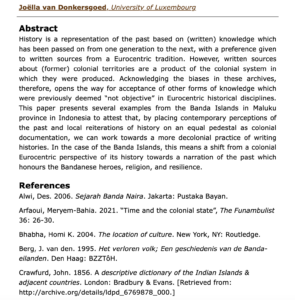 Let me apply this checklist to a recent publication. In October 2023, Dutch historian Joëlla van Donkersgoed, one of the organizers of the Banda Working Group, published the following article in the Indonesian academic journal Wacana: ‘Shifting the historical narrative of the Banda Islands; From colonial violence to local resilience’. In the entire article she mentions the community on Kei only once. She bases her findings mainly on conversations with current inhabitants of Banda. She speaks of Bandanese peoples (in plural) because, according to her, there are several communities that consider themselves ‘Bandanese’. In doing so, she lumps together the ‘original Bandanese’ with those who ended up on the islands after the genocidal attempt, while the latter have a completely different origin and history. Moreover, she is talking about a ‘flight’ and not about migration or ‘Hijrah’, as the Wandan community calls it. Of course, Van Donkersgoed is certainly not talking about centuries of erasure and falsification of history and makes no attempt to correct this. It is hardly surprising that my book does not appear in her reading list.
Let me apply this checklist to a recent publication. In October 2023, Dutch historian Joëlla van Donkersgoed, one of the organizers of the Banda Working Group, published the following article in the Indonesian academic journal Wacana: ‘Shifting the historical narrative of the Banda Islands; From colonial violence to local resilience’. In the entire article she mentions the community on Kei only once. She bases her findings mainly on conversations with current inhabitants of Banda. She speaks of Bandanese peoples (in plural) because, according to her, there are several communities that consider themselves ‘Bandanese’. In doing so, she lumps together the ‘original Bandanese’ with those who ended up on the islands after the genocidal attempt, while the latter have a completely different origin and history. Moreover, she is talking about a ‘flight’ and not about migration or ‘Hijrah’, as the Wandan community calls it. Of course, Van Donkersgoed is certainly not talking about centuries of erasure and falsification of history and makes no attempt to correct this. It is hardly surprising that my book does not appear in her reading list.
In addition to conversations with inhabitants of Banda Neira, Van Donkersgoed also bases her findings on the Hikayat Lonthoir, written in 1922 by a person named Neirabatij, who was the village head of Lontor at that time. On July 3, 2021, this long-lost manuscript was publicly presented by the Maritime Museum in Amsterdam. Village chief Neirabatij wrote his Hikayat with a European readership in mind. He mainly dealt with the history before 1621 and emphasized the arrival of Islam as an important factor. However, in this story too, the Hijrah, the departure from Banda, is not mentioned. On this point, the Hikayat Lonthoir does not contradict colonial historiography. Neirabatij merely added something. No doubt that the Maritime Museum would not have embraced the manuscript so enthusiastically if it had been an indictment against the Netherlands.
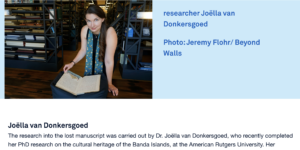 Van Donkersgoed warns her readers against Eurocentric colonial sources and calls for revaluation of local, oral sources. According to her, we should see the Bandanese not only as victims but also as resilient resistance heroes with agency. In other words, even though the genocide of 1621 was very impactful, the Bandanese are more than just the genocide and can speak for themselves.
Van Donkersgoed warns her readers against Eurocentric colonial sources and calls for revaluation of local, oral sources. According to her, we should see the Bandanese not only as victims but also as resilient resistance heroes with agency. In other words, even though the genocide of 1621 was very impactful, the Bandanese are more than just the genocide and can speak for themselves.
Yet, I would like to go one step further. Colonial sources contain lies. There will be no breakthrough if we allow these lies to continue. Moreover, lumping the ‘Banda asli’ together with those who now populate the islands does not contribute to more truth-finding. The ‘new’ Bandanese simply have a different history than those who were forced to leave there. Before we can speak of a truly decolonial historiography, the erasure of the original Wandan community must first be clearly identified. Especially when this is a sensitive issue in the Netherlands and people would rather ignore the centuries of falsification of history. Naming this does not reduce the Banda asli exclusively to victims of Dutch violence who have no ‘agency’. On the contrary, their existence testifies to a strong faith and survival power that the colonizer was unable to destroy.
—
See also:
